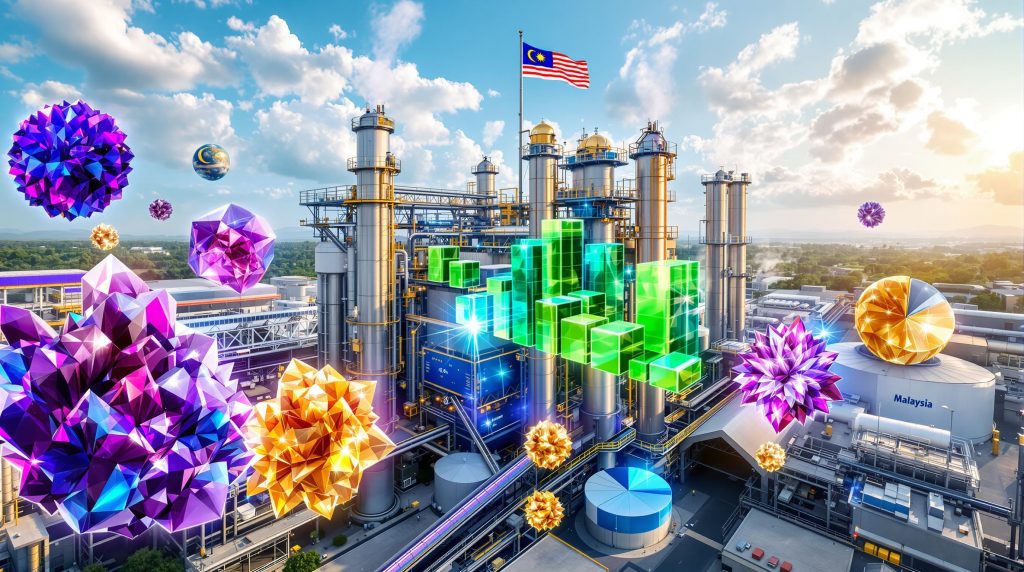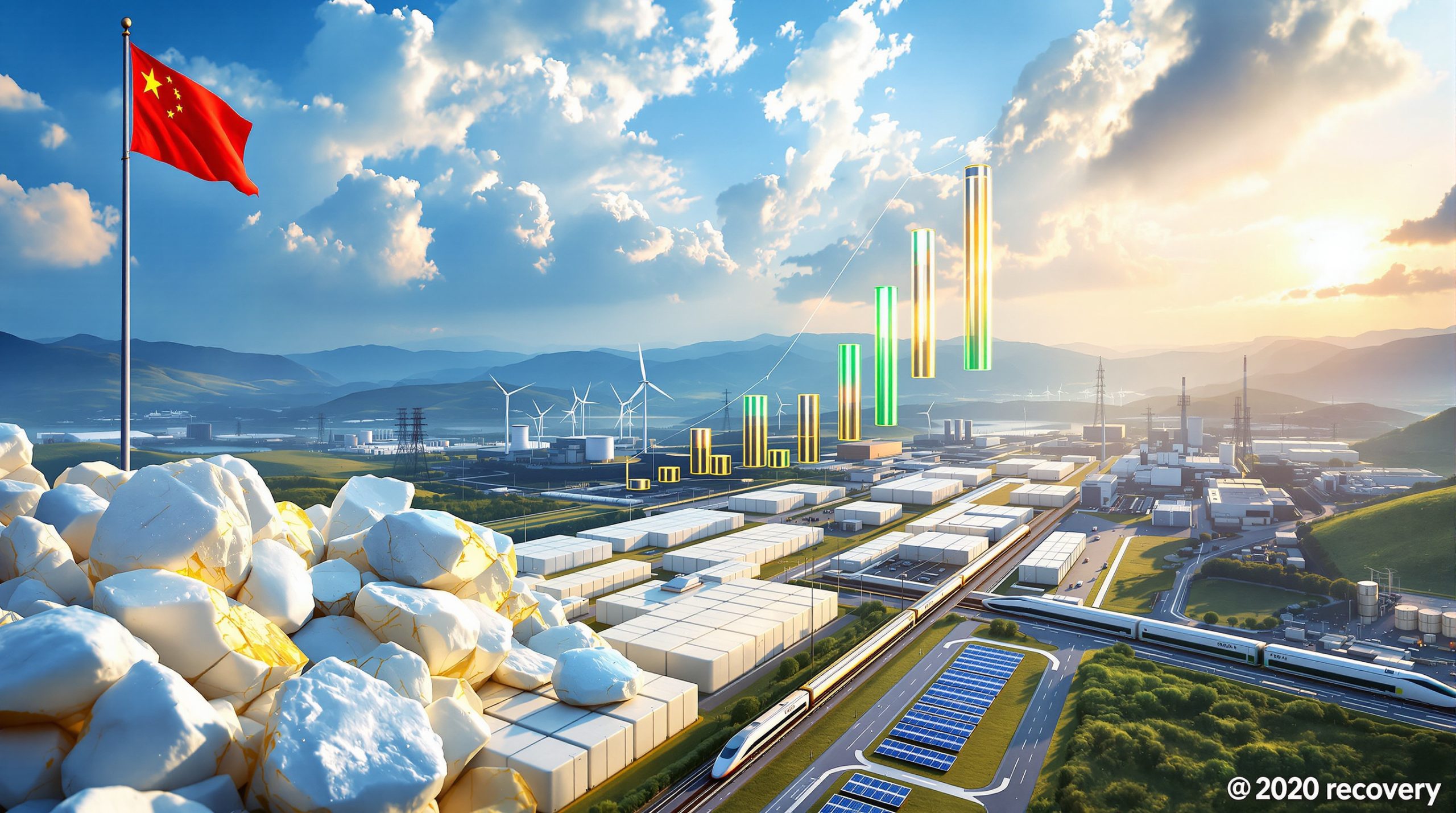Malaysia's Strategic Leap in Heavy Rare Earth Processing
Malaysia is positioning itself as a critical player in the global rare earth supply chain through the development of advanced heavy rare earth (HRE) separation capabilities. The Lynas heavy rare earth separation facility in Malaysia represents a fundamental shift in global supply dynamics, breaking away from China's overwhelming market dominance in these essential materials that power modern technology from electric vehicles to renewable energy systems.
This strategic expansion addresses a critical supply bottleneck as global industries increasingly depend on heavy rare earth elements for the critical minerals energy transition. With processing capacity designed to handle 5,000 tonnes per annum of HRE feedstock, the facility establishes Malaysia as a cornerstone of supply chain diversification for technology-dependent nations seeking alternatives to Chinese-controlled sources.
Understanding Heavy Rare Earth Elements and Their Critical Applications
Heavy rare earth elements comprise a specialised group of materials including dysprosium, terbium, gadolinium, yttrium, and samarium. These elements possess unique magnetic and optical properties that make them irreplaceable in high-performance applications across multiple industries.
Primary Applications Include:
- Permanent magnets for wind turbines and electric vehicle motors
- Advanced defense systems and radar technology
- Medical imaging equipment and laser systems
- Fibre optic communications infrastructure
- LED phosphors and solid-state lighting
- MRI contrast agents and neutron capture systems
The challenge lies in their geological scarcity and processing complexity. While light rare earths can be found in numerous global deposits, heavy rare earths are concentrated in specific geological formations, making their secure supply a national security priority for technology-dependent economies.
Technical Specifications of Malaysia's Advanced Processing Capabilities
The Lynas heavy rare earth separation facility in Malaysia represents a significant technological advancement in rare earth processing, with an estimated investment of RM500 million ($118.37 million USD). Furthermore, the facility's design prioritises efficiency and scalability to meet growing global demand.
Initial Production Timeline:
| Milestone | Target Date | Details |
|---|---|---|
| Samarium Production | April 2026 | Initial production from Mt Weld feedstock |
| Full HRE Suite | Within Two Years | Complete separation capabilities online |
| Progressive Expansion | Ongoing | Capacity increases based on commercial agreements |
The facility will initially process feedstock from Lynas' high-grade Mt Weld rare earths deposit, with potential future integration of ionic clay rare earth deposits from Malaysia. Current Lynas Malaysia operations already produce light rare earth products along with separated dysprosium and terbium oxide, providing operational foundation for expansion.
Initial Product Suite (Within Two Years):
- Dysprosium oxide
- Gadolinium oxide
- Lutetium oxide
- Samarium oxide
- Terbium oxide
- Yttrium oxide
Supply Chain Transformation and China's Market Position
China currently maintains approximately 90% of global heavy rare earth separation capacity, creating significant supply chain vulnerabilities for Western manufacturers. The Malaysian facility directly addresses this concentration risk by establishing a reliable alternative source outside Chinese control.
This development occurs within a broader context of resource nationalism, as Malaysia maintains its ban on raw rare earth exports to protect domestic resources. In addition, the mining industry evolution demonstrates how countries are prioritising domestic value-addition over raw material exports.
Malaysian Trade Minister Tengku Zafrul Aziz confirmed in parliament that Malaysia would not export critical minerals or rare earths solely for immediate profits or strategic goals, despite agreements with other nations.
Malaysia's approach ensures that value-addition occurs domestically while protecting strategic mineral reserves estimated at 16.1 million tonnes, though the country currently lacks comprehensive technology for mining and processing these resources independently.
Investment Structure and Financial Framework
The facility will be self-financed following a successful equity raise completed in September 2025. This financing approach demonstrates strong investor confidence in long-term demand fundamentals and reduces dependency on external financing sources.
Project Execution Strategy:
- Internal Expertise: Lynas possesses the necessary expertise and facilities to execute the project efficiently
- Regulatory Approvals: Construction schedule contingent upon receiving all required approvals
- Offtake Negotiations: Ongoing discussions with partners to secure fair pricing for expanded HRE product range
- Phased Development: Construction will prioritise certain products based on market demand and commercial agreements
Production Timeline and Phased Development Strategy
The facility's development follows a carefully orchestrated timeline designed to minimise risk while maximising early revenue generation. However, the phased construction approach allows for operational optimisation and market validation before full-scale production.
Development Phases:
- Phase 1 (April 2026): Initial samarium production from Mt Weld feedstock
- Phase 2 (Within Two Years): Complete suite of separated HREs operational
- Phase 3 (Commercial Agreement Dependent): Further flowsheet investment for additional HRE products
This staged approach provides flexibility for future expansion while ensuring the facility can adapt to changing market conditions and customer requirements. Consequently, any further investment in processing capabilities will depend on securing commercial agreements that validate such expansion.
Regulatory Environment and Resource Protection Policies
Malaysia's regulatory framework balances economic opportunity with resource sovereignty. The country's ban on raw rare earth exports ensures domestic value-addition whilst protecting strategic mineral reserves for long-term national benefit.
Key Policy Considerations:
- Export Restrictions: Prohibition on raw rare earth exports maintains domestic processing requirements
- Resource Protection: Strategic approach to preserve 16.1 million tonnes of rare earth deposits
- Value Addition: Mandatory local processing ensures maximum economic benefit from natural resources
- Strategic Independence: Policies designed to reduce dependency on foreign technology and expertise
This regulatory environment creates competitive advantages for integrated operations like the Lynas heavy rare earth separation facility in Malaysia while ensuring Malaysia captures maximum value from its natural endowments.
Market Dynamics Driving Heavy Rare Earth Demand
Global heavy rare earth demand is experiencing unprecedented growth driven primarily by the clean energy transition and technological advancement across multiple sectors. Electric vehicle production, wind energy development, and defence modernisation programmes are creating sustained demand pressure.
Primary Demand Drivers:
- Clean Energy Infrastructure: Wind turbines and solar systems requiring permanent magnets
- Electric Vehicle Manufacturing: Growing EV production demanding specialised magnetic materials
- Defence Systems: Advanced radar, missile guidance, and electronic warfare systems
- Consumer Electronics: Smartphones, computers, displays, and communication devices
- Medical Technology: Advanced imaging systems and diagnostic equipment
The convergence of these demand factors creates favourable market conditions for new production capacity, particularly sources that provide supply chain diversification away from Chinese-controlled operations. Furthermore, this aligns with broader efforts to establish a critical raw materials facility infrastructure globally.
Strategic Partnerships and Commercial Agreements
The facility's commercial success depends on securing long-term supply agreements with major industrial consumers. Current discussions focus on establishing fair pricing mechanisms for the expanded HRE product range whilst providing customers with reliable access to critical materials.
Partnership Development Areas:
- Automotive Industry: Electric vehicle manufacturers seeking supply security
- Renewable Energy Sector: Wind turbine producers requiring permanent magnet materials
- Electronics Manufacturing: Companies needing reliable access to specialised rare earth elements
- Defence Contractors: Organisations requiring high-purity materials for advanced systems
These partnerships provide revenue stability through long-term contracts whilst ensuring customers have dependable access to materials essential for their operations. Moreover, this approach supports the development of defence critical minerals supply chains outside Chinese control.
Geological Advantages of Malaysia's Rare Earth Resources
Malaysia's rare earth deposits offer unique advantages in terms of both quantity and strategic positioning. With 16.1 million tonnes of identified reserves, the country possesses substantial resources to support long-term processing operations.
Resource Characteristics:
- High-Grade Deposits: Mt Weld provides premium feedstock for processing operations
- Strategic Location: Proximity to major Asian manufacturing centres reduces logistics costs
- Diverse Geology: Potential for both traditional deposits and ionic clay formations
- Processing Infrastructure: Existing Lynas facilities provide operational foundation
The combination of substantial reserves, favourable geology, and existing infrastructure positions Malaysia as a reliable long-term supplier in the global heavy rare earth market. This development complements Australia's efforts to establish a critical minerals reserve for regional supply security.
Technology Integration and Processing Innovation
The Lynas heavy rare earth separation facility in Malaysia incorporates advanced separation technologies designed to achieve high efficiency and environmental compliance. The facility's modular design allows for progressive capacity expansion based on market conditions.
Operational Advantages:
- Progressive Expansion: Processing capacity increases systematically based on demand
- Product Flexibility: Ability to adjust production mix according to market requirements
- Quality Standards: Designed to meet stringent purity requirements for high-tech applications
- Environmental Compliance: Processing methods aligned with modern environmental standards
Future Expansion Potential and Strategic Outlook
The facility's design accommodates significant expansion opportunities beyond initial capacity. Future development will depend on market conditions, feedstock availability, and successful commercial negotiations with offtake partners.
Expansion Possibilities:
- Additional Elements: Potential processing of europium, holmium, and other specialised HREs
- Capacity Scaling: Progressive increases in processing volume based on demand growth
- Vertical Integration: Possible upstream mining operations or downstream manufacturing
- Technology Enhancement: Continued investment in processing efficiency and product quality
This expansion potential positions the facility as a strategic asset capable of adapting to evolving market conditions whilst maintaining competitive positioning in the global rare earth industry.
Global Supply Chain Implications
The development of Malaysia's heavy rare earth processing capabilities signals a broader transformation in critical mineral supply chains. This shift reflects growing recognition that concentrated supply sources pose unacceptable risks to economic and national security.
Strategic Implications:
- Supply Diversification: Reduced dependency on single-source suppliers enhances resilience
- Geopolitical Balance: Alternative sources provide negotiating leverage for consuming nations
- Economic Security: Reliable supply chains support industrial competitiveness and innovation
- Technological Independence: Diversified sources enable continued technological advancement
As Reuters reports, this development represents a significant milestone in reducing global dependency on Chinese rare earth processing capabilities.
Investment Outlook and Market Positioning
The Lynas heavy rare earth separation facility in Malaysia represents a strategic investment in critical mineral infrastructure. The convergence of growing demand, limited supply alternatives, and supportive regulatory framework creates compelling long-term value creation potential.
Investment Considerations:
- Market Position: Establishment as a major non-Chinese HRE processor
- Demand Growth: Sustained increases in HRE consumption across multiple industries
- Supply Security: Reliable alternative to concentrated Chinese sources
- Strategic Value: Critical infrastructure for technology-dependent economies
The facility's development marks a significant milestone in the evolution of global rare earth supply chains, providing essential supply diversity whilst supporting Malaysia's transition to higher value-added industrial activities. Consequently, as industries increasingly prioritise supply chain resilience, the facility's strategic importance will likely continue growing alongside global demand for these critical materials.
This analysis is based on publicly available information and industry developments. Investment decisions should consider comprehensive due diligence including technical, regulatory, and market factors.
Looking for Opportunities in Critical Minerals Exploration?
Discovery Alert's proprietary Discovery IQ model delivers real-time alerts on significant ASX mineral discoveries, including critical minerals essential for the energy transition, instantly empowering subscribers to identify actionable opportunities ahead of the broader market. Begin your 30-day free trial today with Discovery Alert and secure your market-leading advantage in this rapidly evolving sector.




